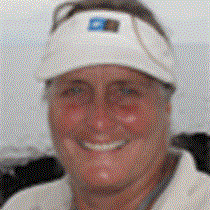Southern Isabela
We all slept soundly while the ship was peacefully anchored off Fernandina Island; some of us heard the engines around 0515 as we began to travel to the morning’s visitor site at Urbina Bay. Two groups of long fast walkers, and a smaller group of long slow walkers, disembarked first, timing our arrival on the beach between the waves. The black sand was already warm, and high beyond the beach crest there were dozens of sea turtle nests whose unseen eggs incubated in this warmth from the blazing tropical sun.
The long trail - 2 miles in total length - followed the coast; we clambered over a pile of lava boulders and then headed inland. Huge coral heads, high and dry a half mile inland, reminded us that this section of the coast was uplifted in 1954 when magma shifted underground. We were delighted when clouds blew over the relentless sun and gave us relief from the heat. Naturalists Tommy, Celso and Veronica led their groups among lush, often sticky and over grown, vegetation and searched for land iguanas and finches and pointed out evidence of the uplift.
I took a final group of five guests who had chosen the short walk option. We disembarked a half hour later and also had to carefully time our landing between rolling breakers that came and went in series, as ocean swells do. Once we’d dried our feet and adjusted our footwear, we hiked over the beach, learned about the sea turtle nesting process, and followed a sandy and sometimes rocky mile-long loop trail inland. We were delighted to find more than a dozen large and brightly colored land iguanas. While photographing one big male iguana that was smack in the middle of the trail, I noticed a sleepy young tortoise half buried in the volcanic dust under a bush.
Many of us went for a swim when we returned to the beach. The waves continued to pound the beach intermittently with periods of calm, so we loaded the Zodiacs with timings and care and everyone made it back safely to the ship for lunch.
Following our siesta, Naturalist Celso gave an informative talk about Charles Darwin. Then two groups of “lava hikers,” with Tommy and Veronica, scrambled out of the Zodiacs and up a black barren cliff to an expansive field of miles and miles of lava flows. Because of the recent rains there are green plants sprouting from cracks in the lava where debris and soil has accumulated and their roots have taken hold. We found three brackish lagoons with lush vegetation and what a surprise to discover eight bright pink flamingoes!
Celso and I went with our groups on Zodiac cruises around the bay and into the calm mangrove lagoons. We saw golden and marbled rays, cormorants and pelicans, striated herons, yellow warblers and many sea turtles. Feeding penguins bobbed to the surface and called to their mates. Their voice is a soft donkey bray and as we motored back to the National Geographic Islander in the golden sunset, their calls echoed across the sea.




